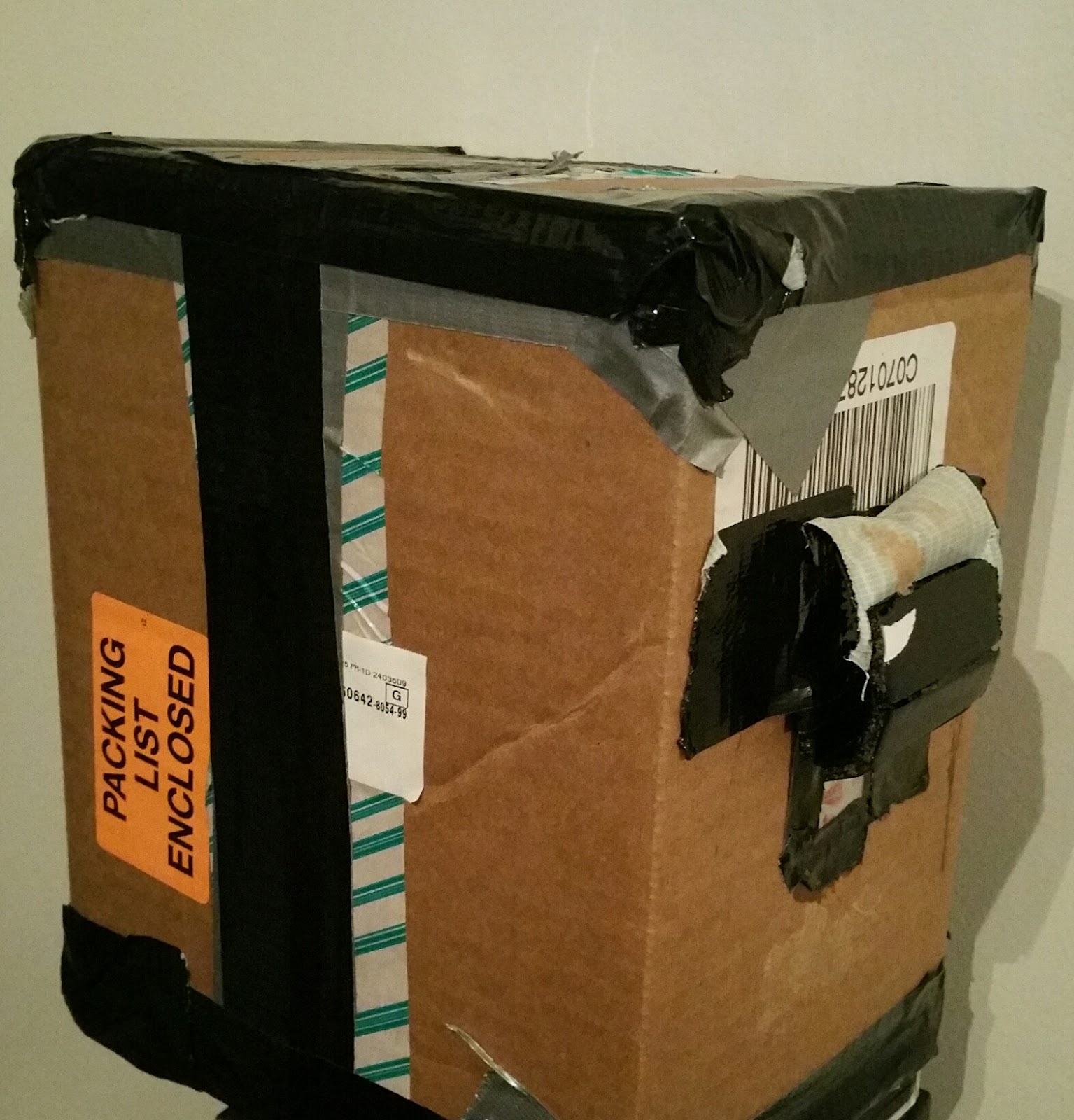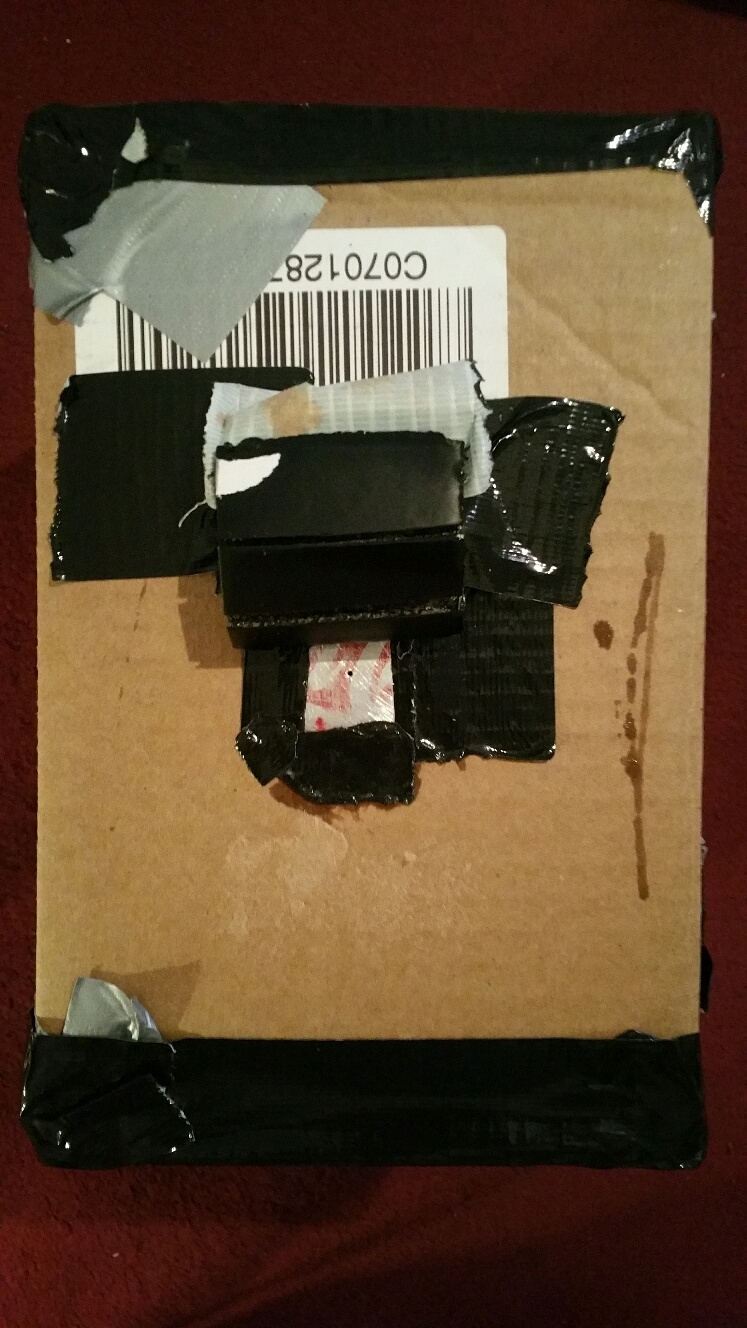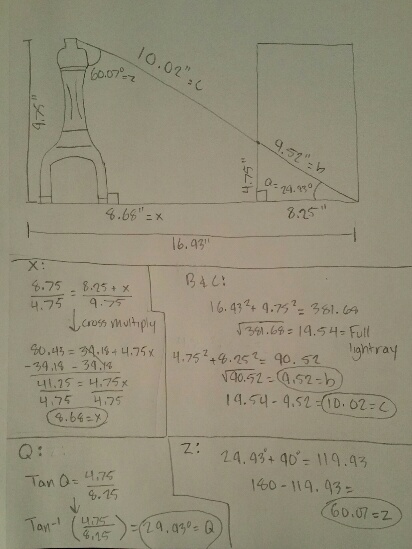In unit 1 of Light, Sound, and Time, we explored more trigonometry and got in deep with it. We also talked about light, whether it is a particle or wave. Next we looked at colors, and how we are able to see colors, and what they are on the electromagnetic spectrum. We also looked at the human eye, and how it is similar to a camera. Leading me to the action project, we have to make a pinhole camera out of household materials, and create an image with it. With that we have to use the math we have learned and make similar triangles, from the box to what the image will be. The object used in the calculations is different from my actual image, because we needed something that was taller than the height of the pinhole camera. I really liked how we used household items to make a thing that can actually take a picture with film; it honestly amazes me that that is possible. Please enjoy seeing my camera, and the picture I was able to take with it.
 |
| NVA "Pinhole Camera Side View" (2016) GCE Lab School. |
 |
| NVA "Pinhole Camera Top View" (2016) GCE Lab School. |
This device will capture light by having a small hole in the top, that will take light and put it inside the camera. When the light enters the camera, whatever image is showing will be flipped on the other side of the box; as shown below.
 |
| NVA "Light in Pinhole Camera Example" (2016) GCE Lab School. |
This camera doesn’t illustrate refraction, because refraction only happens when light goes from one medium to another, like air to water or glass, which will physically slow down the speed at which the light is going. Since there is only a hole, it won't slow down the speed of the light. It is black on the inside because we don’t want the light going into the camera to reflect, because if it did it would ruin the image. When white, it will reflect it, so we make it black to stop the light from doing so. The camera shows light being a wave, because it does not collide with any other light waves. It shows or represents the electromagnetic spectrum, because black is absorbing all the colors that are going into the camera, and the only colors showing are from the image being shown into the camera. The light acts as a particle when it is interacting with the paper, because the particles give off energy and when that happens a chemical reaction happens within the paper, creating an image after going through the developing process.
 |
| NVA "Pinhole Camera Similar Triangles" (2016) GCE Lab School. |
Above are the calculations I did for figuring out the similar triangles that go into taking the picture and the light ray going into the box. The hypotenuse of the triangle is the light ray from the top of the object going down to the bottom right corner of the camera. This is good for having to figure out the distance you need from your camera to your object, so that you can get all of the object in through the pinhole.
 |
| NVA "Yoshi Pinhole Picture" (2016) Latin School. |
For the picture, the shutter speed was about 3 minutes, so the film had enough time to absorb all of the light, leading to a better picture. If I were to do this again, I would play around with the times of the shutter speed, so I could get the perfect image. Also I would like to be able to re-position the camera, so that it could get everything in the picture a lot better. I had more objects, a yoyo and a Rubic cube, under the Yoshi that I wanted in the picture. I would probably want to put something underneath to raise the Yoshi and the things it was on.


No comments:
Post a Comment